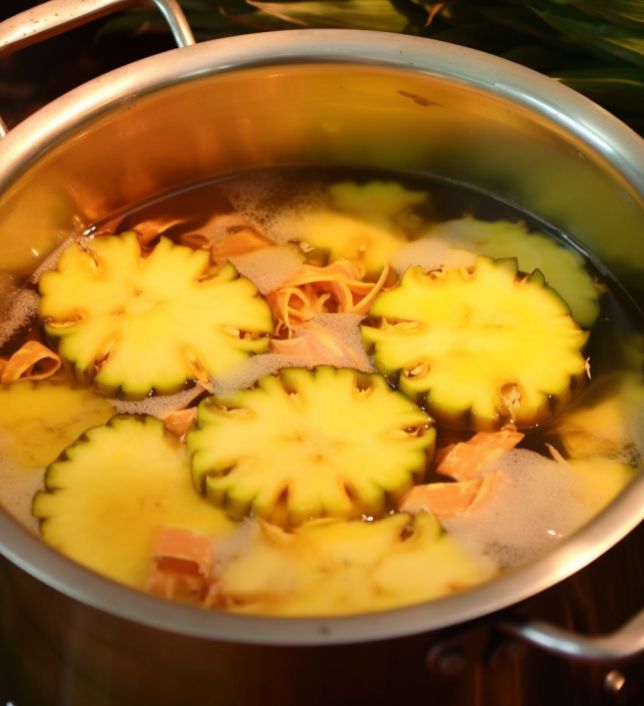ADVERTISEMENT
## 🌿 5. **Compost Them for a Nutrient Boost**
Okay, composting isn’t exactly groundbreaking—but did you know pineapple peels can **supercharge your compost pile**?
Rich in nitrogen, moisture, and enzymes, pineapple skins help break down other materials faster. Just remember:
– Chop them into smaller pieces.
– Mix them with dry materials like leaves or cardboard.
– Don’t overload your compost with too many acidic fruits at once.
Your garden will thank you with richer, healthier soil.
—
## 🍚 6. **Infuse Rice or Water for Extra Flavor**
Want to add a subtle tropical twist to your dishes? Pineapple peels can be used to **infuse flavor** into water, tea, or even rice while cooking.
### Try This:
– Add a few clean pineapple peel pieces to the pot while boiling rice.
– Remove before serving.
You’ll get a hint of sweetness and fragrance that pairs especially well with coconut rice, Asian dishes, or jerk-seasoned meals.
—
## 💪 7. **Boost Immunity with a Pineapple Peel Syrup**
You can create a natural **immune-boosting syrup** using pineapple peels, honey, ginger, and lemon. It’s like a tropical spin on elderberry syrup—great for cold and flu season.
### Pineapple Peel Immune Syrup:
1. Boil peels with sliced ginger and lemon zest.
2. Simmer for 30–40 minutes.
3. Strain and mix the liquid with raw honey.
4. Store in the fridge.
Take a spoonful when you’re feeling under the weather, or stir into tea for a wellness boost.
—
## 🐓 8. **Use in Animal Feed or as a Natural Enzyme Supplement**
On farms and in permaculture systems, pineapple peels are often used as part of **natural animal feed**—especially for chickens, pigs, or goats. They’re rich in fiber and enzymes, and animals love the taste.
You can also **ferment the peels with water and molasses** to create an enzyme-rich supplement that can be used in gardens or as an animal health booster.
If you have pets or a small garden, this is a brilliant way to stretch your scraps even further.
—
## 🍍 A Few Notes Before You Get Started
Before you dive into all the wonderful uses for pineapple peels, keep these tips in mind:
– **Always wash the pineapple thoroughly** before using the peels—especially if it’s not organic.
– **Avoid moldy or rotten parts.** If the peel has gone bad, compost it instead of reusing.
– Store peels in the fridge or freezer if you’re not using them right away.
– Do a **patch test** before using on your skin—pineapple enzymes can be strong and may cause irritation for sensitive types.
—
## Final Thoughts
From soothing teas to DIY cleaners to compost gold, **pineapple peels are more useful than you ever imagined**. Not only do these hacks help reduce food waste, but they also save money and give you healthier, more natural alternatives to store-bought products.
So the next time you slice up a pineapple, don’t toss the peels—**repurpose them**. Whether you’re sipping fermented tepache, treating your skin, or refreshing your kitchen with an enzyme cleaner, those peels are full of potential.
It’s time to stop trashing the treasure and start making the most of every part of your pineapple.
—
Want a printable recipe sheet or DIY guide for pineapple peel tea, cleaner, or toner? I can help you create one—just let me know!
